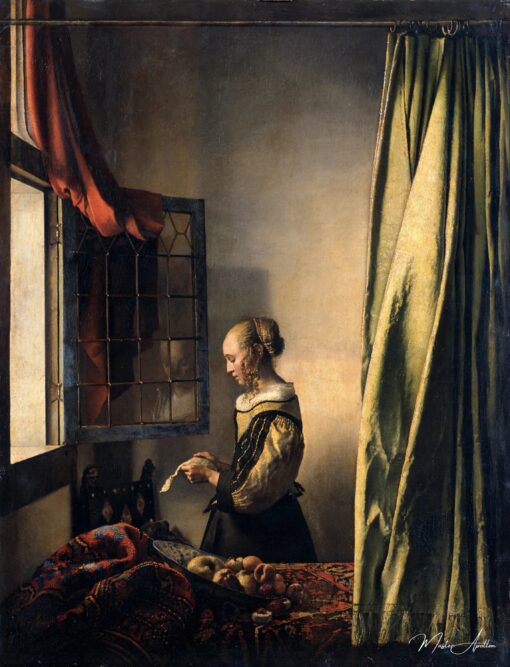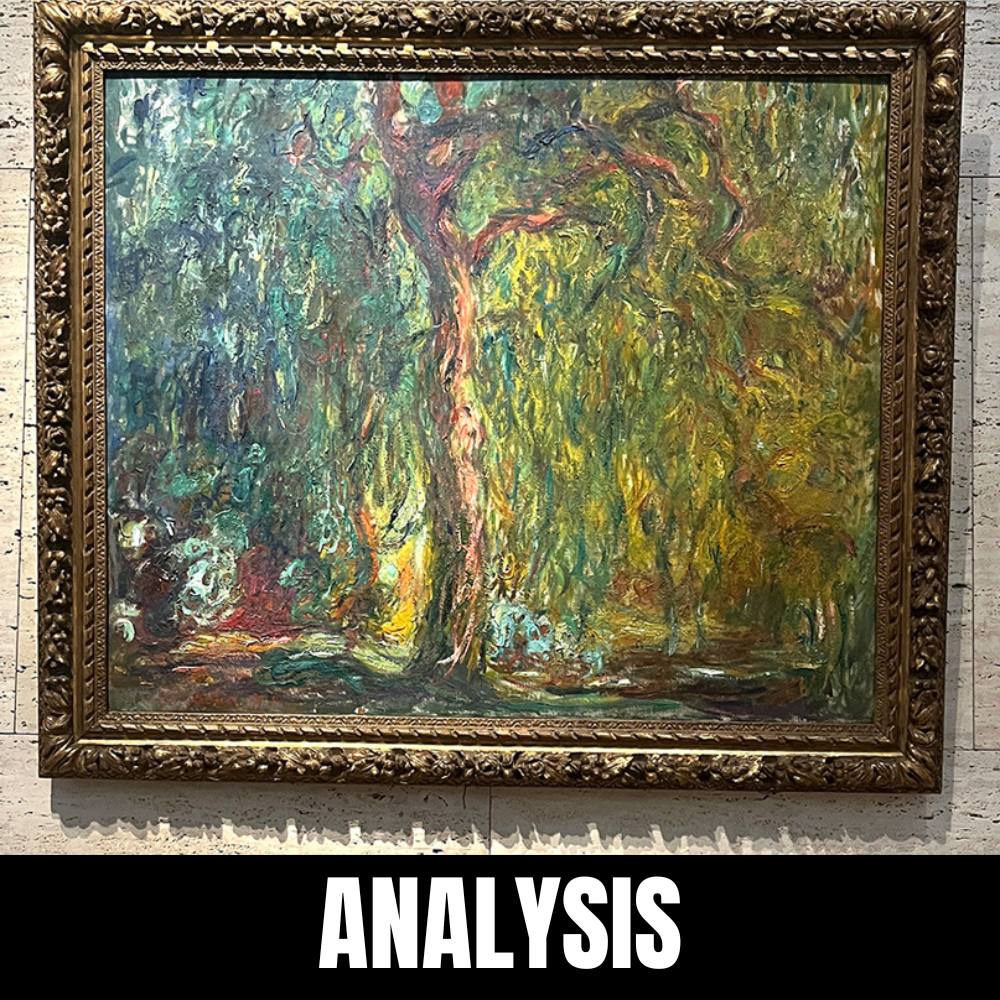Your cart is currently empty!

Mulberry Tree – Van Gogh
This stunning oil painting reproduction of Van Gogh’s Mulberry Tree is a masterpiece that will bring a touch of artistic elegance to any space. Crafted with the highest quality materials and meticulous attention to detail, this reproduction captures the essence of the original painting with remarkable precision.
Using a combination of traditional techniques and modern technology, our skilled…
The Girl Reading at the Window – Johannes Vermeer: A Quiet Moment of Contemplation
Johannes Vermeer, the celebrated Dutch painter known for his exquisite depictions of everyday life, brings to life yet another intimate and contemplative scene in The Girl Reading at the Window (circa 1657). Known for his ability to capture fleeting moments with delicate brushwork, Vermeer turns a simple act of reading into an evocative and timeless image. The painting exemplifies his masterful handling of light, space, and emotion, and offers viewers a glimpse into the private world of a young woman absorbed in her thoughts.

A Glimpse into the Quiet World of the Girl
At the heart of The Girl Reading at the Window is a young woman, sitting serenely by a window and absorbed in a book. The composition itself draws the viewer’s attention immediately to her peaceful presence. Vermeer has captured a quiet, private moment in time, inviting us to witness the intimacy of reading as the woman’s eyes are focused on the pages before her.
The window through which she sits also plays a key role in the painting, offering a sense of openness and light. The window is not just a physical barrier between her and the outside world, but a metaphorical one. While she is in a secluded space, reading, her connection to the outside world is still palpable, with light spilling into the room from beyond the window. This subtle juxtaposition between seclusion and connection adds depth to the painting, suggesting a moment of escape through literature.

Masterful Use of Light and Space
One of the hallmarks of Vermeer’s work is his exceptional use of light, and The Girl Reading at the Window is no exception. The soft, natural light entering from the window bathes the young woman and her surroundings in a warm glow, creating a sense of calm and serenity. Vermeer’s precise rendering of light and shadow serves not only to enhance the realism of the scene but also to evoke a certain mood — one of contemplation and quietude.
The window is strategically positioned, allowing the light to illuminate the girl’s face and the book in her hands. This careful attention to detail underscores Vermeer’s genius for making light an active participant in the scene, shaping the emotional tone and narrative of the work. The contrast of the bright light on the left side of the canvas and the dark shadows on the right side further enhances the depth and realism of the space.

The Symbolism of the Window and the Girl’s Absorption in Reading
The window in The Girl Reading at the Window serves as both a literal and symbolic device. It provides an opening to the outside world, hinting at the girl’s connection to a larger reality beyond the room. However, she remains absorbed in her reading, seemingly unaware of the world outside. This duality — the interior versus the exterior — is an important aspect of the painting, emphasizing the power of literature and introspection as an escape from the mundane.
Books, in 17th-century Dutch culture, were often symbols of knowledge and personal reflection, and the act of reading was considered a private, contemplative activity. In this sense, the girl’s immersion in her book can be seen as a metaphor for the intellectual and emotional retreat into thought and imagination. By capturing this moment, Vermeer allows the viewer to share in the experience of silent reflection, a rare and precious gift of stillness.
The Quiet Elegance of the Girl’s Portrait
Vermeer’s ability to imbue his subjects with a sense of individuality and personality is particularly evident in The Girl Reading at the Window. Though the girl’s identity is unknown, she is rendered with such elegance and poise that she feels like an integral part of the painting, not just a passive figure. The simple yet elegant attire she wears and her composed posture convey a sense of quiet dignity. Her gaze, focused on the book, suggests both concentration and serenity, inviting the viewer to pause and reflect along with her.
The way Vermeer captures the textures of her clothing, the folds of fabric, and the smooth surface of the book all demonstrate his incredible attention to detail. Even the faint reflection of light on the pages of the book serves to add depth and life to the scene, further enhancing the realism of the moment. It’s this combination of skill and sensitivity to the nuances of everyday life that makes Vermeer’s work so enduring.
Conclusion: A Moment of Intimate Reflection
The Girl Reading at the Window is a prime example of Vermeer’s ability to transform an everyday moment into a timeless masterpiece. Through his careful handling of light, space, and subtle narrative, he elevates the act of reading — a simple, quiet activity — into a meditative and introspective moment that resonates with the viewer. In this painting, Vermeer invites us into a world of peaceful solitude, where the only sound is the turning of a page, and the only concern is the thoughts that arise from the words on the page.
Through The Girl Reading at the Window, Vermeer captures not just a moment in time but the universal experience of finding solace in the act of reading and the quiet contemplation it affords. It’s a painting that speaks to the power of art itself — a window to the soul that connects us to a deeper, more reflective understanding of the world.
Johannes Vermeer
Johannes Vermeer, a Dutch Baroque painter, is renowned for his masterful use of light and meticulous attention to detail, capturing intimate, everyday moments with timeless elegance.





Leave a Reply